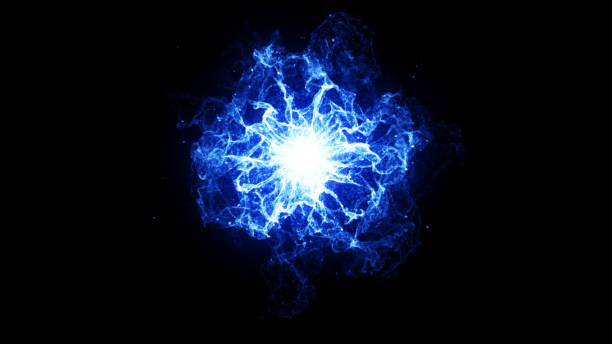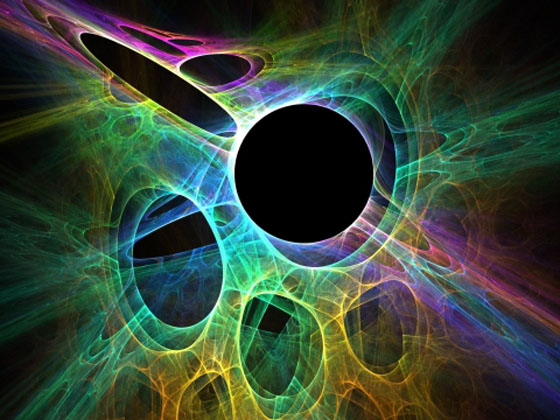The world around us is filled with wonders—some easily explained, others stubbornly defying understanding. For centuries, scientists have chipped away at the unknown, turning mysteries into knowledge and myths into measurable truths. Yet, not everything in nature has yielded its secrets. Some phenomena continue to baffle researchers, their causes hidden, their mechanisms elusive, their very existence sometimes straddling the line between science and the surreal.
These phenomena remind us that for all humanity’s progress, the universe still holds puzzles far deeper than our current tools and theories can solve. They inspire wonder, spark curiosity, and keep alive the timeless drive to explore the unknown.
Here are ten of the most mysterious phenomena that scientists still study today—phenomena that challenge not only our understanding of the natural world but also our imagination.
1. Ball Lightning
Imagine a glowing orb of light, floating silently through the air during a thunderstorm, crackling with energy, slipping through windows, and sometimes exploding without warning. That is ball lightning—a rare, eerie phenomenon that has fascinated and frightened observers for centuries.
Unlike ordinary lightning, ball lightning appears as a sphere, ranging from the size of a golf ball to a basketball, and can last several seconds before vanishing. Some witnesses have reported it passing through glass or metal unharmed, only to disappear in a loud bang.
Despite thousands of accounts across history, scientists still cannot fully explain it. Some theories suggest ball lightning is plasma held together by magnetic fields, while others propose it is the result of chemical reactions involving vaporized silicon after a lightning strike. In recent years, high-speed cameras and accidental laboratory recreations have offered tantalizing evidence, but the mystery remains unsolved.
Ball lightning continues to remind us that even the familiar power of thunderstorms hides secrets we have yet to master.
2. The Taos Hum
In the small town of Taos, New Mexico, a strange phenomenon has puzzled residents and scientists alike: a low-frequency hum that only some people can hear. Often described as a distant engine or a faint droning noise, the Taos Hum is not recorded by microphones and seems to exist only in human perception.
Similar hums have been reported in other parts of the world, including the UK, Canada, and Australia. But what causes it?
Some researchers suggest industrial equipment or electrical infrastructure as the culprit. Others point to natural explanations, such as seismic activity or atmospheric disturbances. A few even consider it a result of human physiology, where some individuals may be more sensitive to low-frequency sound waves.
Despite decades of study, the Taos Hum remains an auditory mystery, hovering at the edge of science, psychology, and perception.
3. Dark Matter
The universe is full of matter we cannot see. Scientists studying the rotation of galaxies realized that visible stars and gas alone cannot account for the gravitational forces holding galaxies together. Something invisible—dark matter—must be providing that missing mass.
Although dark matter makes up about 27% of the universe, we cannot directly detect it. It does not emit light or interact with electromagnetic radiation, making it invisible to telescopes.
The leading theories suggest it could be made of undiscovered particles such as WIMPs (Weakly Interacting Massive Particles) or axions. Some propose it may not exist at all, and instead, our understanding of gravity itself may be incomplete.
Dark matter is one of the greatest unsolved mysteries of modern science. We know it’s there because of its gravitational effects—but what it is, no one yet knows.
4. Dark Energy
If dark matter pulls the universe together, dark energy pushes it apart. In the late 1990s, scientists discovered that the expansion of the universe is accelerating. This was shocking—gravity should slow expansion over time, not speed it up.
To explain this, scientists proposed a strange, unseen force called dark energy, which makes up nearly 68% of the universe. Unlike dark matter, dark energy doesn’t cluster around galaxies. Instead, it is thought to be woven into the fabric of space itself, exerting a repulsive force.
Some theories suggest it is related to Einstein’s cosmological constant, a property of empty space. Others propose more exotic ideas, like a dynamic energy field called “quintessence.”
For now, dark energy is a placeholder for something we do not yet understand. It dominates the universe, but its nature remains a profound mystery.
5. The Wow! Signal
On a summer night in 1977, radio astronomer Jerry Ehman was scanning the skies with the Big Ear radio telescope in Ohio when he detected a powerful, unusual signal from the constellation Sagittarius. It lasted just 72 seconds but was so striking that Ehman circled it on the printout and wrote “Wow!” in the margin.
The Wow! signal was never heard again. Its origin remains unknown. Could it have been a message from an alien civilization, or just an unusual natural radio burst?
Subsequent searches have never reproduced it. Some suggest it was caused by a passing comet, but no consensus exists. The Wow! signal remains one of the most tantalizing hints that we might not be alone in the universe.
6. The Placebo Effect
The mind has astonishing power over the body, and nowhere is this clearer than in the placebo effect. When patients believe they are receiving real treatment—even if it’s just a sugar pill—they often experience real improvements in health.
The placebo effect has been observed in everything from pain relief to depression and even Parkinson’s disease. Brain imaging shows measurable changes during placebo responses, yet we still don’t fully understand how belief translates into biological healing.
This phenomenon challenges the boundaries between psychology and physiology. It suggests that the brain can activate powerful healing processes, but the exact mechanisms remain elusive. Scientists study the placebo effect not only to understand human health but also to improve how we design medical treatments.
7. Fast Radio Bursts
From deep in the cosmos, astronomers occasionally detect sudden, intense bursts of radio waves lasting only milliseconds. These are known as Fast Radio Bursts (FRBs), and their origins are one of the hottest mysteries in astronomy.
Some FRBs are one-time events, while others repeat unpredictably. They release as much energy in a fraction of a second as the Sun does in days.
The leading theories suggest they could be caused by magnetars (highly magnetized neutron stars), collisions between stars, or even phenomena we do not yet understand. A few imaginative thinkers even speculate about alien technology, though there is no evidence to support this.
With more advanced telescopes now tracking FRBs, scientists are gathering clues. Yet their true nature remains an unanswered question written in the stars.
8. Rogue Waves
For centuries, sailors told tales of monstrous waves rising seemingly out of nowhere, towering as high as ten-story buildings. Many dismissed them as myths—until satellite data confirmed they are real.
These rogue waves can reach heights over 25 meters (80 feet) and strike suddenly, often in calm seas. Unlike tsunamis, they are not caused by earthquakes but appear spontaneously, perhaps from the merging of smaller waves.
Scientists believe rogue waves may result from constructive interference, where multiple wave systems align to create a single giant wall of water. But predicting when and where they will occur is still nearly impossible.
Rogue waves remain both a scientific puzzle and a real danger for ships at sea.
9. The Origin of Life
We know life exists—we are living proof—but how did it begin? This remains one of the most enduring scientific mysteries.
Did life start in a “primordial soup” of chemicals on early Earth, sparked by lightning or volcanic activity? Or did it emerge in deep-sea hydrothermal vents, where heat and minerals created the first self-replicating molecules?
Another possibility is panspermia—that life’s building blocks came from space, delivered by comets or meteorites.
Despite advances in biology and chemistry, no one has yet recreated the precise steps that turned lifeless matter into living cells. The question of how chemistry became biology remains a mystery as deep as the cosmos itself.
10. Consciousness
Perhaps the most mysterious phenomenon of all lies not in the stars but in our own minds. Consciousness—the sense of awareness, the experience of being alive—is something science has yet to fully explain.
Neuroscience has mapped brain activity and linked regions of the brain to thoughts, emotions, and memory. But the “hard problem of consciousness” remains: how do physical processes in the brain produce subjective experience? Why does electrical activity give rise to feelings, thoughts, and awareness?
Some theories propose consciousness is an emergent property of complex networks. Others suggest it may be a fundamental property of the universe, like space and time. The mystery of consciousness bridges science, philosophy, and even spirituality, raising profound questions about what it means to be human.
Conclusion
From the strange lights of ball lightning to the deep puzzles of dark energy and consciousness, these mysteries reveal how much we still don’t know about the universe and ourselves. They are not failures of science but frontiers of discovery—open doors waiting for answers.
Every unsolved question is a reminder that science is a journey, not a destination. The universe is richer, stranger, and more wondrous than we can yet imagine. And perhaps that is the greatest mystery of all—that even as we uncover its secrets, the cosmos continues to surprise us, urging us onward in the timeless quest for understanding.






